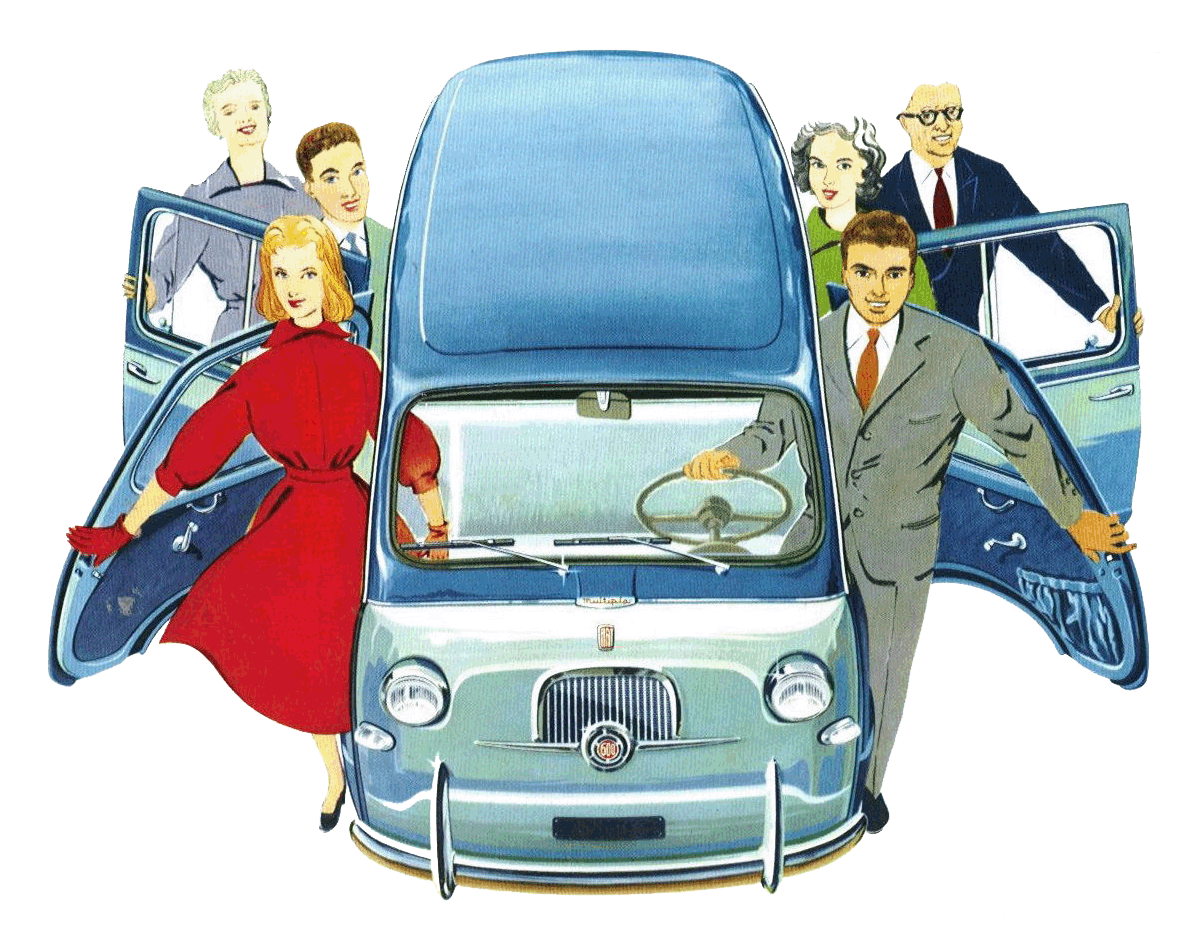My Multipla
After 30 years of owning and restoring British cars exclusively, I am now the proud owner of my first Italian car.

It all started with a visit to Bruce Wiener's Micro Car Museum in Madison, GA a few years ago. This was just months before Bruce sold his entire collection of Micro Cars including a gorgeously restored, white over yellow, 6-seat Fiat 600 Multipla.

I was in love at first sight. I should confess that, while beauty is in the eye of the beholder, no one really falls in love with a Fiat 600 Multipla based purely on its aesthetic qualities. Although, when compared to its 1998-2010 Brava-based namesake, the classic 600 Multipla could be considered stunning. One falls in love, rather, with its unique form, ingenious layout, and surprisingly practical design. It is, without a doubt, the predecessor of multitudes of more recently released mini-vans, sport utility vehicles, and cross-overs still immensely popular today.
While much smaller than most modern designs, and therefore less practical some could rightly say, it possesses the same seemingly magical qualities as other period masterpieces such as the Morris Minor, Austin-Healey "Bug-eye" Sprite, VW Beetle, and the original Austin Mini, which is actually only 19 inches shorter than the 6-Seat Multipla.

In appearance it most closely resembles a VW Type 2 Bus, with the obvious exception being its overall scale, which is 1/2 to 2/3 that of the VW. Yet, like Harry Potter's magical tent at the Quiddich World Cup, the view inside is vastly different than the view outside. The amount of interior space and the Multipla's ingenious transformable rear cargo area create a cabin of amazing practicality, which stands in stark contrast to it's doll house dimensions.

While not a sales success by any definition, the Multipla, based on the more popular Fiat 600 sedan, was destined to be most useful as a commercial van for small European businesses and, even more so, as a taxi on the streets of London and Rome. Only recently has the amazing Multipla enjoyed renewed recognition as a collector vehicle. Extremely rare now, especially in America, these once utilitarian transports are highly valued and found in many serious car collections around the world. Most importantly, they are tremendously practical, great fun to drive, and almost universally appreciated by all who see them on the road today.







